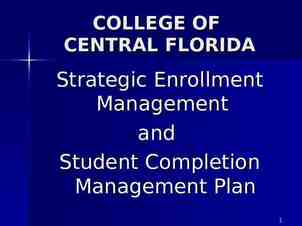AP PSYCHOLOGY Sensation & Perception, Part 2 Adapted from James A.
36 Slides2.41 MB
AP PSYCHOLOGY Sensation & Perception, Part 2 Adapted from James A. McCubbin, PhD Clemson University Worth Publishers
Perception Selective Attention focus of conscious awareness on a particular stimulus
Change Blindness
Perceptual Illusions
Perceptual Illusions
Perceptual Illusions
Perceptual Illusions
Perceptual Organization: Gestalt Visual Capture tendency for vision to dominate the other senses Gestalt--an organized whole tendency to integrate pieces of information into meaningful wholes
Perceptual Organization: Gestalt Grouping the perceptual tendency to organize stimuli into coherent groups Grouping Principles proximity--group nearby figures together similarity--group figures that are similar continuity--perceive continuous patterns closure--fill in gaps connectedness--spots, lines, and areas are seen as unit when connected
Perceptual Organization Figure and Ground--organization of the visual field into objects (figures) that stand out from their surroundings (ground)
Perceptual Organization: Grouping Principles
Perceptual Organization: Closure Gestalt grouping principles are at work here.
Perceptual Organization: Grouping Principles Gestalt grouping principles are at work here.
Perceptual Organization: Depth Perception Depth Perception ability to see objects in three dimensions allows us to judge distance Binocular cues retinal disparity images from the two eyes differ closer the object, the larger the disparity convergence neuromuscular cue two eyes move inward for near objects
Perceptual Organization: Depth Perception Visual Cliff
Perceptual Organization: Monocular Cues relative size smaller image is more distant interposition closer object blocks distant object relative clarity hazy object seen as more distant texture coarse -- close fine -- distant
Perceptual Organization: Relative Size
Perceptual Organization: Interposition
Perceptual Organization: Monocular Cues (cont.) relative height higher objects seen as more distant relative motion closer objects seem to move faster linear perspective parallel lines converge with distance relative brightness closer objects appear brighter
Perceptual Organization: Relative Height
Perceptual Organization: Perspective Techniques
Perceptual Organization: Light and Shadow
Perceptual Organization: Illusory Depth
Perceptual Constancy Perceptual Constancy perceiving objects as unchanging even as illumination and retinal image change color shape size
Perceptual Organization
Perceptual Organization: Illusory Depth Explanation
Perceptual Organization: Muller-Lyer Illusion
Perceptual Organization: Size-Distance Relationship
Perceptual OrganizationBrightness Contrast
Sensory Restriction: Blakemore & Cooper, 1970 Kittens raised without exposure to horizontal lines later had difficulty perceiving horizontal bars.
Perceptual Interpretation Perceptual Adaptation (vision) ability to adjust to an artificially displaced visual field prism glasses Perceptual Set a mental predisposition to perceive one thing and not another
Perceptual Set: Schemas What you see in the center is influenced by perceptual set
Perceptual Set: Schemas Flying Saucers or Clouds?
Perception and the Human Factor Human Factors Psychology explores how people and machines interact explores how machine and physical environments can be adapted to human behaviors
Perceptual Set: Human Factors 10 Altitude (thousands of feet) Pilot’s perceived descent path 8 6 Altitude looks this much higher 4 Actual descent path 2 0 20 18 16 14 12 10 8 6 4 Distance from runway (miles) 2
Is There Extrasensory Perception? Extrasensory Perception controversial claim that perception can occur apart from sensory input telepathy clairvoyance precognition Parapsychology the study of paranormal phenomena ESP psychokinesis









































